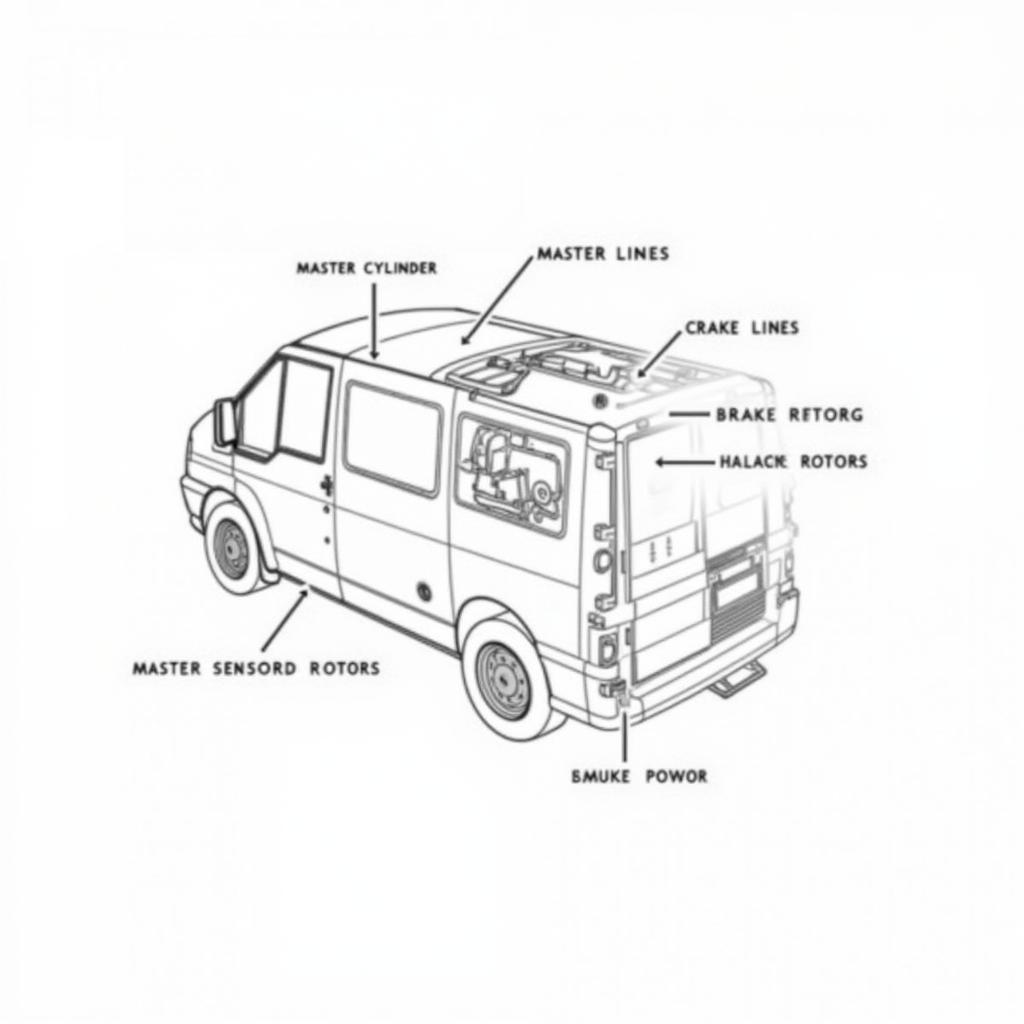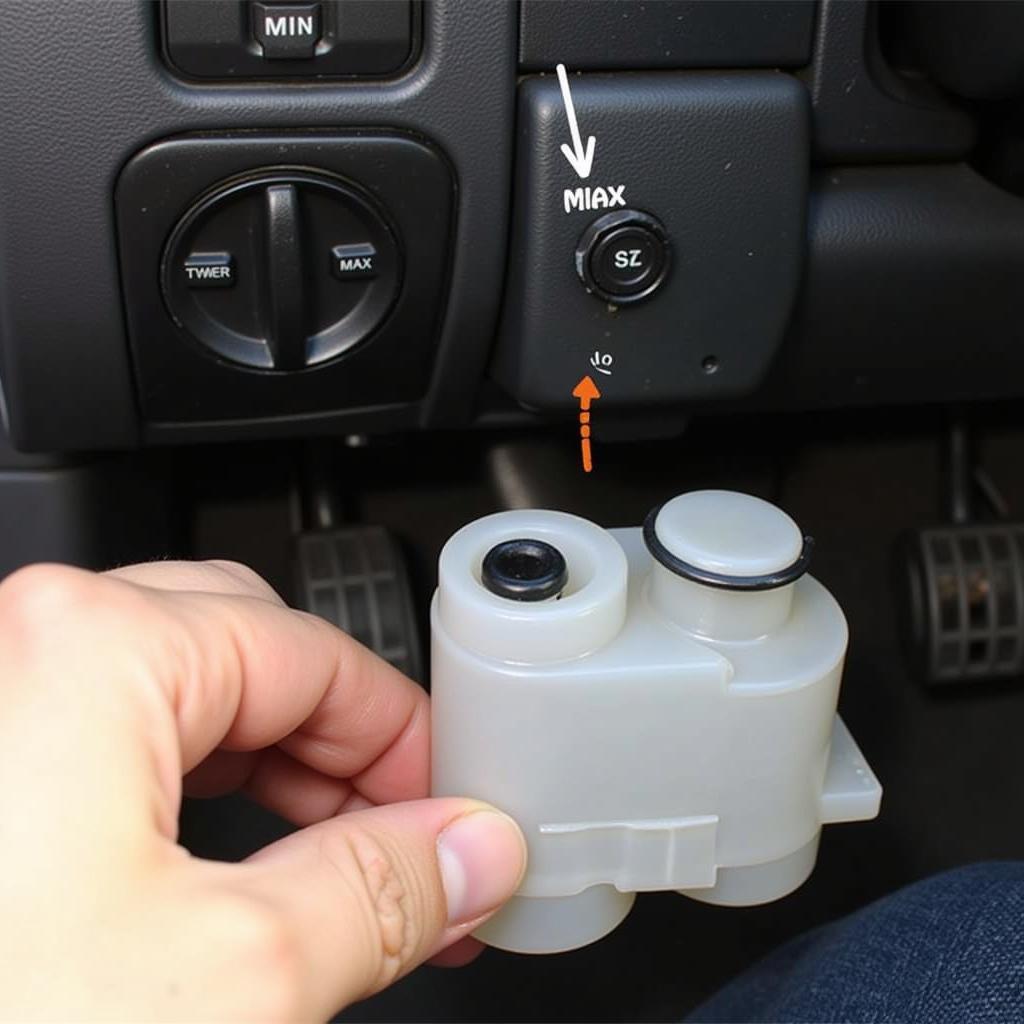The dreaded brake pad warning light on your Ford Transit can be a source of anxiety. This guide provides expert advice on diagnosing, troubleshooting, and potentially resolving the issue, covering everything from basic checks to advanced diagnostic techniques and remote software solutions.
Understanding why this light illuminates is crucial for maintaining your van’s safety and performance. This article will delve into the common causes, diagnostic procedures, and potential solutions for the brake pad warning light on your Ford Transit. We’ll also explore how remote diagnostics and software programming can play a role in addressing the problem. how to turn off brake pad warning light ford transit
Understanding the Brake Pad Warning Light
The brake pad warning light is part of your Ford Transit’s braking system monitoring. It’s designed to alert you when your brake pads are worn down to a point where they need replacing. Ignoring this warning can lead to costly repairs and compromised safety.
Common Causes of the Warning Light
- Worn Brake Pads: This is the most common culprit. Over time, brake pads wear down due to friction.
- Faulty Brake Pad Sensor: The sensor itself can malfunction, triggering the light even if the brake pads are fine.
- Damaged Wiring: A break or short in the wiring connected to the sensor can cause the light to illuminate.
- Low Brake Fluid: Although a separate warning light usually indicates low brake fluid, it can sometimes be linked to the brake pad warning light.
- Brake System Malfunction: In rare cases, the light can indicate a more serious issue within the braking system itself.
Diagnosing the Problem
- Visual Inspection: Start by visually inspecting your brake pads. If they appear thin, they likely need replacing.
- Checking the Brake Fluid Level: Ensure the brake fluid reservoir is full. Low fluid can indicate a leak or worn pads.
- Diagnostic Scanning: Using a professional diagnostic scanner can pinpoint the specific cause of the warning light. This is where remote diagnostics can be invaluable, allowing a specialist to assess the issue remotely.
- Consulting a Specialist: If you’re unsure, consulting a qualified technician specializing in Ford Transit brake systems is always recommended. They can perform a thorough inspection and diagnose the problem accurately. ford transit brake pad warning light reset
Why is my Ford Transit brake pad warning light on?
The most likely reason is worn brake pads. However, a faulty sensor, damaged wiring, or low brake fluid could also be the cause.
Resolving the Issue
- Replacing Brake Pads: If the pads are worn, they need to be replaced. This is a relatively straightforward procedure, but it’s best left to a qualified mechanic if you’re not comfortable working on your vehicle’s brakes.
- Replacing the Sensor: A faulty sensor will need to be replaced.
- Repairing Wiring: Damaged wiring should be repaired or replaced by a qualified technician.
- Addressing Brake Fluid Issues: Low brake fluid needs to be topped up. However, if the fluid is consistently low, there may be a leak that needs addressing. 2015 ford transit brake pad warning light reset
“Regular brake inspections are crucial for preventing unexpected issues and ensuring optimal braking performance,” says John Miller, a certified automotive technician specializing in Ford vehicles. “Ignoring the brake pad warning light can lead to significantly more expensive repairs down the line.”
 Diagram of Ford Transit Brake System Components
Diagram of Ford Transit Brake System Components
Remote Diagnostics and Software Solutions
Modern technology allows for remote diagnostics and software programming. This can be especially useful for addressing certain issues related to the brake pad warning light. For instance, if a software glitch is triggering the light, a remote software update can potentially resolve the problem without a physical visit to a repair shop. 2014 ford transit brake pad warning light reset
“Remote diagnostics can save time and money, especially for routine maintenance and software-related issues,” adds Maria Sanchez, a leading expert in automotive remote diagnostics. “It allows specialists to quickly diagnose and sometimes even fix problems without the need for a physical inspection.” ford transit 2016 brake pad warning light reset
Conclusion
The brake pad warning light on your Ford Transit is a crucial safety feature. Addressing the issue promptly is essential for maintaining your van’s braking performance and ensuring your safety on the road. By understanding the common causes, diagnostic procedures, and potential solutions, you can take proactive steps to resolve the problem and prevent further complications. Don’t ignore the warning – address it promptly to ensure safe and reliable braking.
FAQ:
- How serious is the brake pad warning light on a Ford Transit? It’s serious and should be addressed promptly to ensure safe braking.
- Can I drive with the brake pad warning light on? It’s not recommended, as it indicates worn brake pads or a brake system fault.
- How much does it cost to replace brake pads on a Ford Transit? Costs vary depending on location and labor rates, but it’s a relatively affordable repair.
- How often should I check my Ford Transit’s brake pads? It’s good practice to visually inspect them every few months or during routine maintenance.
- Can I reset the brake pad warning light myself? While you might be able to reset it, it’s crucial to address the underlying issue first.
- What are the symptoms of worn brake pads besides the warning light? Squeaking or grinding noises when braking, reduced braking performance, and a vibrating brake pedal are other signs.
- How can remote diagnostics help with my Ford Transit’s brake pad warning light? Remote diagnostics can identify software-related issues that might be triggering the light, potentially allowing for a remote software fix.


